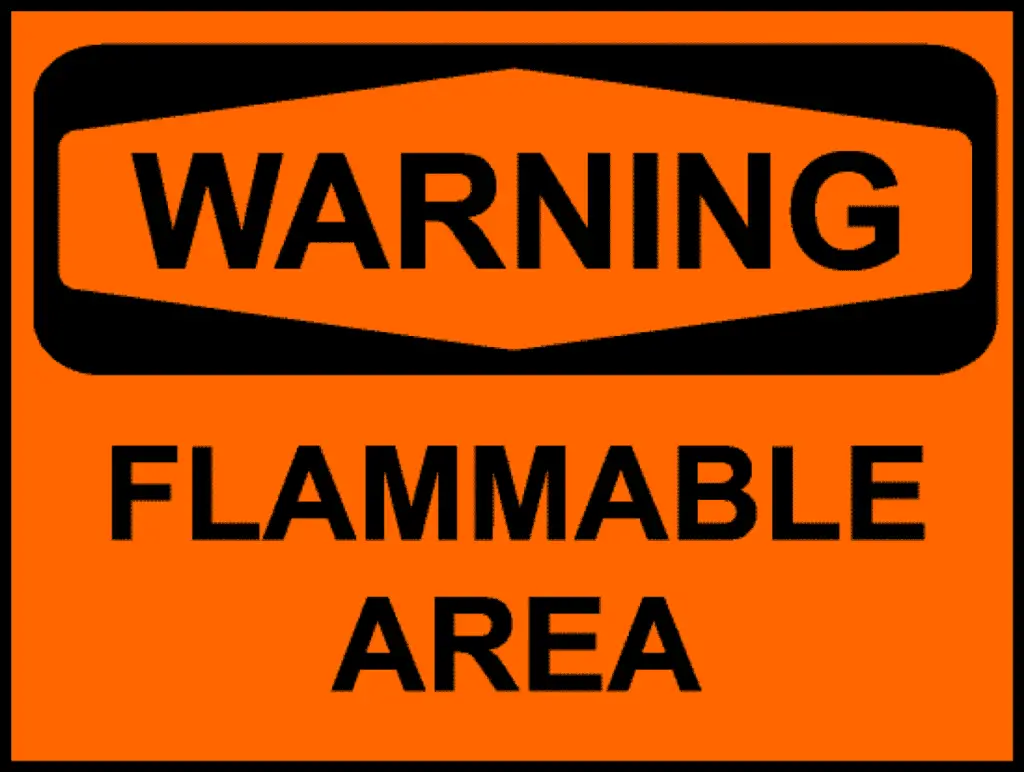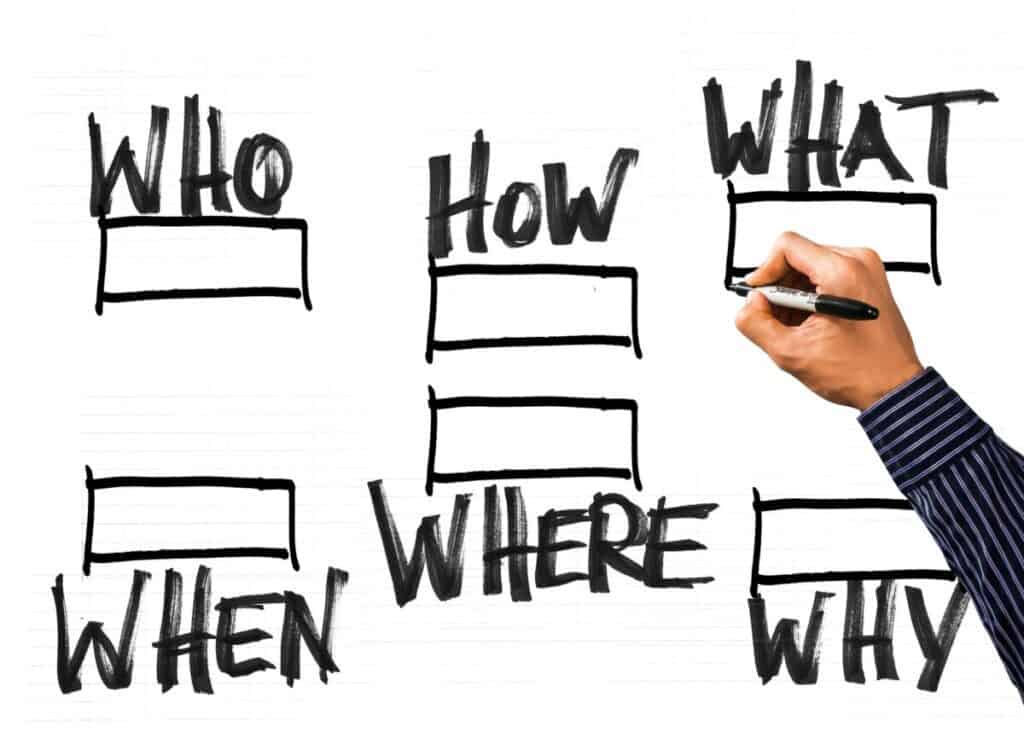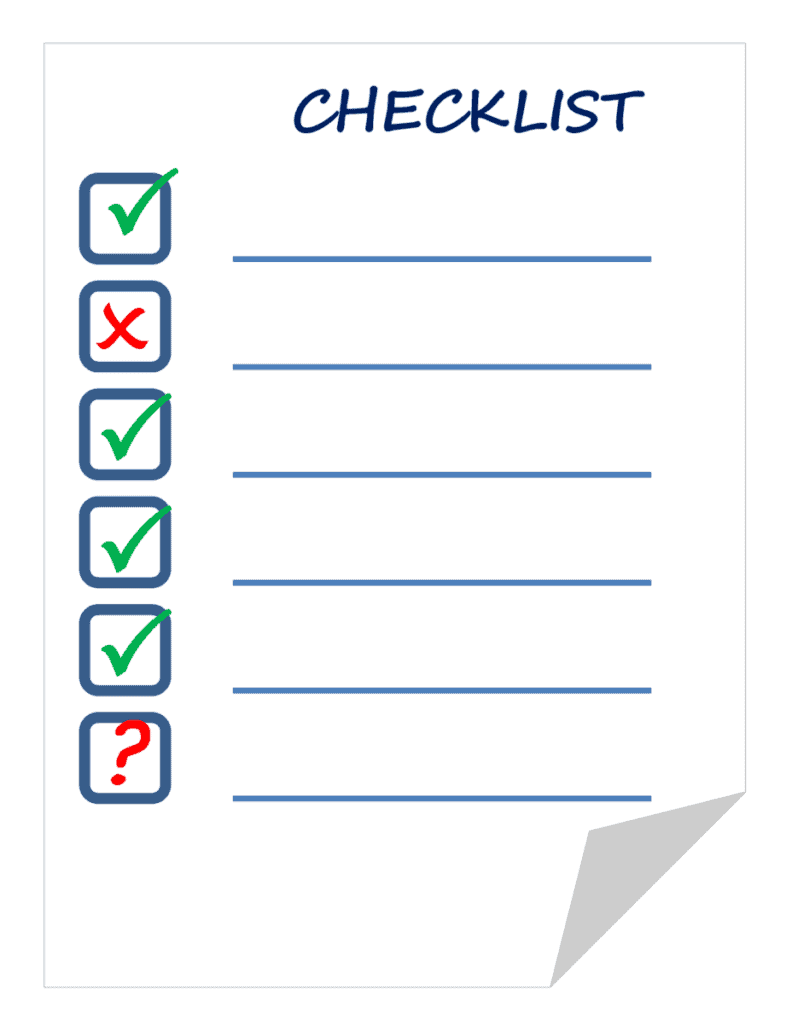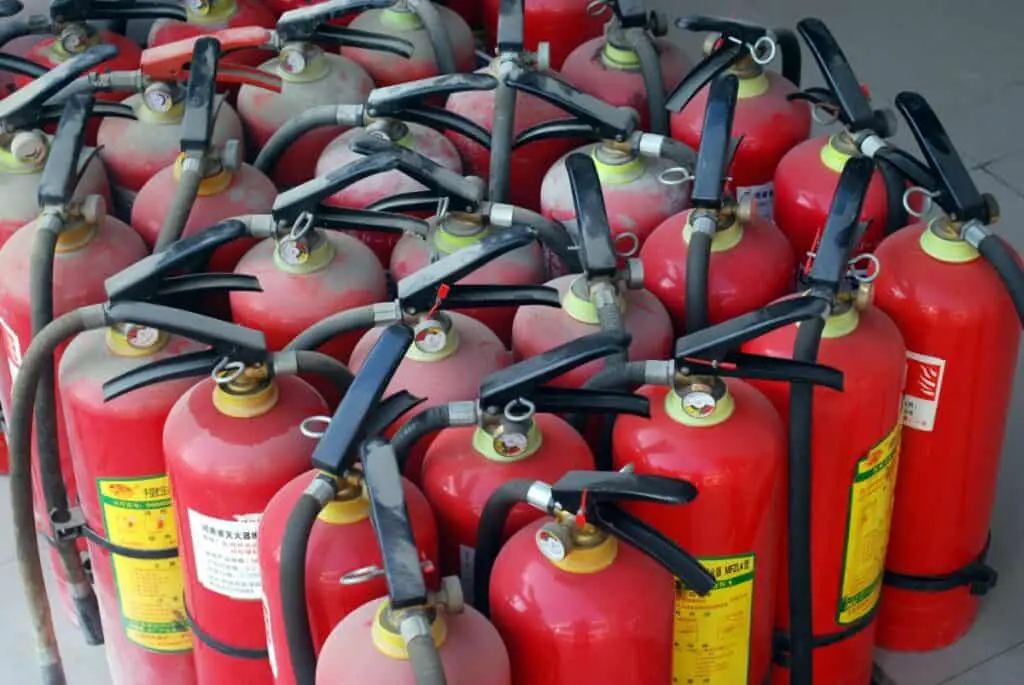Many people forget about the existence of fire extinguishers until they realize they need to use one. When it comes to personal safety inside of your home or office, however, it’s an excellent idea to own a fire extinguisher. Everybody needs to learn about fire safety. Even if you’d rather not think about your home or office setting ablaze. You need to have one so learn how to purchase a fire extinguisher.
So, what should you look for when it comes to buying a fire extinguisher? When purchasing a fire extinguisher, you must consider factors like
- What your fire safety needs are
- Who will use the fire extinguisher
- How to maintain your fire extinguisher with inspections
- Fire extinguisher accessories
- If you should own more than one fire extinguisher
- Fire extinguisher placement
- Fire extinguisher maintenance
- Fire extinguisher size
- Fire extinguisher class
Since there isn’t much information available on the Internet today covering how to buy a fire extinguisher, we created this article to help you. Below we’ll discuss everything you’ll need to consider when purchasing a fire extinguisher. We’ll also cover things like fire extinguisher inspections and fire extinguisher maintenance.
Using Your Fire Safety Skills
We often hear about how vital it is to make sure our smoke detectors are working. On the other hand, not much knowledge is being spread about the many different fire prevention methods that people can use. One of those significant fire prevention methods that can keep you safe is the purchase of fire extinguishers. So, we’ll now start discussing why you should consider buying a fire extinguisher for your home or office.
Having a fire extinguisher ready on hand at all times can help you out in case of a small fire. However, before you buy one, you should consider our list below.
- Whenever there is a fire, your top priority should be ensuring that everybody leaves your home or office safely. Once the smoke alarm trips, you have about two minutes, or possibly even less, to exit the building.
- Don’t leave your home or office with your workers or friends, and then re-enter the structure to extinguish the fire.
- Instead, fire extinguishers should be used if a tiny fire sparks up anywhere around you. Using a fire extinguisher, in that case, can help the fire from growing larger.

What is Your Specific Fire Safety Need?
First, you’ll need to consider your specific fire extinguisher need. Remember, buying a fire extinguisher for a factory will be very different from purchasing one for your home. So, before you head off to buy your fire extinguisher, you need to realize what your specific needs are.
In some cases, all-purpose ABC fire extinguishers won’t meet all of the NFPA safety standards for workplaces. There are several factors that go into choosing the right fire extinguisher for a business. They include:
- the materials you use at your workplace
- the size of your workplace
If you aren’t sure about what your business might need to meet the requirements for the NFPA safety standards, you can reach out to a certified fire inspector. That way, you’ll know you are purchasing the right fire extinguisher for your needs.

Who Will Use Your Fire Extinguisher?
Individuals are often tempted to purchase a more massive fire extinguisher than what’s required. However, before buying the largest fire extinguisher, find out who is going to be using that fire extinguisher. If you are purchasing a fire extinguisher for your home, then you want to buy a smaller extinguisher that you can carry and handle easily and secure in a cabinet or closet.
If you plan on placing your fire extinguisher in a vehicle bracket, then you’ll need to check to make sure you can fit your fire extinguisher into the bracket before you buy it. You also need to ensure that if you are purchasing a fire extinguisher for a business, both customers and employees can get to it and utilize it when necessary. Purchase the recommended size since it’s easier to handle than larger fire extinguishers.
Buying a heavier extinguisher means you’ll have more flame retardant, and that flame retardant will be distributed faster and longer. However, most models that weight more than nine pounds can be tough to both use and hold. So, consider purchasing the largest fire extinguisher you can easily handle.
How to Maintain Your Fire Extinguisher
You can maintain your fire extinguisher by utilizing inspections. We describe both workplace and home inspections below.

Workplace Fire Extinguisher Inspection
It’s typically less expensive to purchase a fire extinguisher at a hardware store. However, if you do buy one there and you are using it for commercial use, then your fire extinguisher will need an inspection. Even brand-new fire extinguishers require inspections. Instead, if you purchase a fire extinguisher from your nearby fire protection company, you’ll wind up saving a lot of time and money.
That’s because when you buy a fire extinguisher from a fire protection company, your extinguisher comes:
- Already inspected
- Tagged
- Ready to pass the next fire marshal inspection
Regular Home Fire Extinguisher Inspection
If you are purchasing your fire extinguisher for your home, you’ll still need to perform regular inspections on your fire extinguisher to ensure that the fire extinguisher will still work when there is a fire. According to the National Fire Protection Association, you should read the directions that came with the fire extinguisher as soon as you can so that you know how to work it in case of an emergency.
The USFA recommends that you pay attention to the below steps when you perform your fire extinguisher inspection.
- Easy Access
- Pressure Gauge
- Check for Damage
- Cleaning Your Extinguisher
Step #1: Easy Access
After you’ve purchased a fire extinguisher for your home, you want to place it properly. While you might think to store your fire extinguisher next to your stove is a great idea, keep in mind that fire extinguishers should not be placed near areas that reach high temperatures. Remember, if your stove-top suddenly catches on fire, you won’t want to be anywhere near it, anyway.
Instead, consider placing the fire extinguisher in an area that’s five to eight feet away from any possible fire sources, including things like:
- Fireplaces
- Fat fryers
- Clothes dryers
You want to place your fire extinguisher where you can access it quickly and safely if a fire starts. Remember to keep a fire extinguisher within forty feet from any part of your house. Ensure that the extinguisher is also easy to access and visible so that others can get to it when needed as well.
Step #2: Pressure Gauge
Fire extinguishers typically feature a pressure gauge. That pressure gauge will tell you if your fire extinguisher is in the right operating range. If you purchase a fire extinguisher with a pressure gauge (and it’s a good idea to make sure the fire extinguisher you buy has one), always make sure that the gauge’s needle shows the correct pressure. If your fire extinguisher utilizes a test indicator, you can press it to check the pressure reading on your fire extinguisher.
Step #3: Check for Damage
You’ll also need to check your fire extinguisher for any damage. Carefully ensure that the following parts are in the right working order:
- Hoses
- Nozzles
- Can
If you notice any visibly damaged areas, like rust or a dent, then you might want to get a new fire extinguisher. You should also document how often you check your fire extinguisher on the inspection tag. That way, you can keep track of your inspections.
Step #4: Cleaning Your Extinguisher
Inspect the outside of your fire extinguisher for:
- Grease
- Dust
- Oil
If you notice any build-up on the fire extinguisher, then it’s time to clean it.
Many people overlook their home fire extinguisher when it comes to making a home safety plan. Make sure you perform your checks and that you know how to use your fire extinguisher. If you need any extra assistance, you can always contact your local fire department for additional help.
Fire Extinguisher Accessories
If you are purchasing a fire extinguisher for your business, then you probably also need to consider the other accessories you’ll need to buy for your workplace. Most commercial properties will also require additional items for their fire extinguishers, like:
- Vehicle brackets
- Extinguisher cabinets
- Stickers that demonstrate where the exits and emergency equipment are located
- Wall brackets for extinguisher mounting.
It can be challenging to find all of these things separately. Instead, it might be wiser to go to your nearby fire protection company and ask what you need for your business. That way, you can get everything you need at the same place. You’ll also be better prepared for emergencies as well as your business’s fire marshal inspection.

You May Need More Than One
It’s just as important to buy a fire extinguisher as it is to train your employees and family on how to use one. You can ask your local fire station if they have training events since many of them do. Or you can also reach out to your nearby fire protection company and book a fire training class for your home or office.
It’s essential to plan ahead of time when it comes to an emergency since that’s the best way to prevent a catastrophe.
According to the National Fire Protection Association, you should install a fire extinguisher on each floor of your home and inspect it once a year. According to the USDA, or the US Department of Agriculture, you should install separate fire extinguishers throughout your home, including:
- Your kitchen
- Your garage
- Your basement
- Your car
Wherever you place your fire extinguishers, make sure they are in plain sight and the reach of adults. You want to keep your fire extinguisher out of the reach of children. It’s also a good idea to put your fire extinguisher close to an escape route. That way, you have easy access to your fire extinguisher as you exit the structure.
Depending on how many fire extinguishers you decide to buy, nothing can substitute for this essential safety item: making a fire plan. You’ll need to ensure that everyone in your home or your workplace knows how to leave the structure quickly, where to meet and to call 911. Don’t forget this important step and remember to plan ahead.
Even if you wind up putting out the fire by yourself, you should still call emergency services and not cancel the call. You want the professionals to assess the situation and ensure that the fire is gone, so the building is safe to re-enter. Don’t risk this by using your own assessment, since you don’t want to be responsible for anybody else’s injury or even worse, causing a death.
The Chemicals Inside a Fire Extinguisher
Fire extinguishers come with different chemicals inside of them, depending on the type of fire extinguisher you decide to purchase.
- Carbon dioxide fire extinguishers make the jet clouds most of us associate with the use of a fire extinguisher. These fire extinguishers smother flames and suck away heat.
- Dry-powder fire extinguishers use sodium bicarbonate. These fire extinguishers also smother flames and suck away the oxygen from the fire.
- Class K fire extinguishers use a potassium acetate-based formula that will foam once it is expressed.
- Some other fire extinguishers use water that’s compressed by air as well.

What Size of Fire Extinguisher Should I Buy?
One thing that differentiates most fire extinguishers is their sizes. While many people will tell you bigger is better, and it often is because you have more fire retardant, there are drawbacks to using these larger fire extinguishers. Not everybody will be able to handle a larger fire extinguisher because they can be heavy and difficult to use. The weight on an extinguisher tells you how much of the chemicals are inside the extinguisher. The canister weights several more pounds than that.
You’ll also discover that there is a significant difference between disposable fire extinguishers with plastic valves and rechargeable extinguishers that use metal valves. Rechargeable fire extinguishers typically cost more. However, refilling your fire extinguisher once the gauge shows that your fire extinguisher is out is far less expensive than purchasing another disposable fire extinguisher.
Fire extinguishers come in many different sizes, which we list below.
Ten-Pound Fire Extinguisher
You can use a ten-pound fire extinguisher in your garage or home workspace. You can keep this fire extinguisher where a fire might increase before you notice it. When purchasing this type of fire extinguisher, consider a rechargeable model that features a hose because it’s easy to use.
Five-Pound Fire Extinguisher
Five-pound fire extinguishers works best for being able to grab quickly when placed in a kitchen or laundry room area. If you need a five-pound fire extinguisher, consider purchasing a rechargeable model that offers a hose.
Two-Pound Fire Extinguisher
Two-pound fire extinguishers are fantastic to have in your vehicle. If you want to purchase one of these, you should buy one that’s disposable and has mounting hardware, so the fire extinguisher doesn’t just roll around inside of your car’s trunk.
Stove-Top Fire Extinguisher
Stove-top fire extinguishers work well when mounted on a range hood over the stove. You shouldn’t mount these over deep fryers since the chemicals can splash grease and easily spread flames. If you want to purchase a stove-top fire extinguisher, consider purchasing one with pressurized magnetic cans. That means they’ll pop open once the flames heat up and spray sodium bicarbonate, or baking soda, to douse the fire.
How many types of fire extinguishers are there?
There are five different kinds of fire extinguishers, and five classes of fires to match them. Understanding the different kinds of fire extinguishers can assist you in figuring out which fire extinguishers would be best for your home or office. Below we’ll cover each type of fire extinguisher available.
- Class A fires occur when everyday items like clothing, trash, or paper catch on fire. You can use a class A fire extinguisher to put out these fires.
- Class B fires involve liquids or gases, like grease fires. You can utilize a class B fire extinguisher when you have an explosive oil or gas fire.
- Class C fires mean electrical fires, involving things like motors or transformers. You can use a class C fire extinguisher to put out an electrical fire.
- Class D fires involve metals. You can use a class D fire extinguisher to put out any fire involving metals.
- Class K fires involve appliances or cooking oils, like vegetable and animal oil. You can use a Class K fire extinguisher to put out these types of fires.
Some people think that classes B and K sound very similar. However, you never want to use a class B fire extinguisher on a class K fire, or you could wind up making the fire grow. Make sure you know the type of fire that you are experiencing before grabbing your fire extinguisher. If you wind up using the wrong kind of fire extinguisher on your fire, you could wind up spreading the fire rather than putting out the occurrence.
The Price of a Fire Extinguisher
Most fire extinguishers for the home cost about fifteen to twenty dollars for a single-use extinguisher. If you want to buy a multi-use extinguisher, then those typically cost between thirty to eighty dollars. Remember, you may need to buy more than one, mainly if your home features multiple floors.
What Type of Fire Extinguisher Should You Purchase?
You should select a fire extinguisher that you can handle and lift with ease. You’ll notice numbers paired with each class of fire extinguisher. That way, you’ll know what size fire extinguisher you are purchasing. The higher the number on the fire extinguisher, the bigger the fire it can handle.
- For your kitchen, consider a five-pound fire extinguisher that can handle class A-B-C or B and K type fires.
- If you want a fire extinguisher in your backyard’s shed, consider a Class A.
- When placing a fire extinguisher in a bedroom or a living area in your home or office, consider a Class A.
- If you want a fire extinguisher for your outdoor grill, consider a dry-powder fire extinguisher that is a Class B-C.
- If you are purchasing a fire extinguisher for your car, buy a tiny disposable fire extinguisher.
When to Use Your Fire Extinguisher
While it might seem obvious to know when you should use your fire extinguisher, you’ll still need to consider a few things before you grab your fire extinguisher to put out any fire. First, you’ll need to ensure that everybody inside of your home or workplace has safely exited the building. You also want to check to make sure the fire isn’t blocking any exits.
You want to make sure you have a pathway that is clear to the exit behind you. If not, you may need to make a path for your extinguisher. If you are dealing with a small fire, like a trash can fire, you can attempt to quell the fire with a fire extinguisher. However, don’t forget to get everyone else to evacuate the building if you are worried about how well you can fight the fire. Fires can multiply, and you always want to consider safety first.
How to Use Your Fire Extinguisher
You’ll also need to know how to use your fire extinguisher correctly. It’s not a good time to run and read your fire extinguisher’s manual when a fire starts. Instead, make sure you know how to use it ahead of time. As soon as you get the extinguisher,
- Read the manufacturer’s manual so that you know how to operate it.
- After that, you need to register your fire extinguisher with your manufacturer.
- That will keep you informed about any product updates or recalls involving your model of fire extinguisher.
When you purchase your fire extinguisher, check to ensure that the pressure indicator on it has a “full” reading. You also want to make sure that your fire extinguisher was manufactured over the past twelve months. The National Fire Protection Association suggests that any dry chemical extinguishers you may buy that are made to be thrown out after one use should be discarded after twelve years has passed since the date of manufacture.
Since you are purchasing a fire extinguisher, you’ll also need to know how to use your fire extinguisher properly. The PASS method is recommended in this case, which means
- Pull
- Aim
- Squeeze
- Sweep
We’ll break this method down in a bit more detail below.
- First, pull the pin and make sure you hold the fire extinguisher a distance away from you. Once you’ve done that, you can release the fire extinguisher’s locking mechanism.
- Now, aim low, and point the extinguisher at the bottom area of the fire.
- Squeeze the lever slowly and release the chemicals.
- Last, sweep the nozzle, going from one side to the other.
You’ll also need to assess to see if your fire extinguishers are correctly charged. To do that, you should inspect them monthly and follow the instructions you see in your owner’s manual. If you must recharge a rechargeable fire extinguisher, take it to a certified fire-equipment company for assistance.
Storing Your Fire Extinguisher
Besides knowing how to use your fire extinguisher, you’ll also need to know how to store it after you purchase one. Fire extinguishers can be stored in temperatures below 120°F. So, you’ll need to keep your fire extinguisher away from hot areas, like stoves and fireplaces. Also, if it gets hotter than that in your garage, then you may need to consider other storage places for your fire extinguisher. You should also store your fire extinguisher on mounting brackets.
For peace of mind, you should check your fire extinguisher for leaks at least once a year, if not monthly. You’ll also need to check to see if your pressure gauge still shows a normal range. If it does, then it’s still usable. However, if you wind up using your fire extinguisher, even if just for a tiny fire, you’ll still need to take it to your fire department to have it recharged, or learn if you need to replace it.
A History of Fire Safety and Fire Extinguishers
Back in 1925, President Calvin Coolidge announced that the United States would host the first National Fire Prevention Week. The National Archives and Records Administrations states that nowadays, the National Fire Prevention Week is the longest-running public health week in United States history.
The National Fire Protection Association (NFPA) states that 358,000 house fires took place between the years 2011 and 2015. These fires created many repercussions, including the following:
- A total of 2,510 deaths.
- A total of 12,3000 injuries.
- A damage count of over $6.7 billion.
Also, the NFPA documented the leading causes of home fires. Those leading causes were from things like:
- Electrical fires
- Smoking materials
- Intentional fires
- Cooking utensils
- Heating equipment
